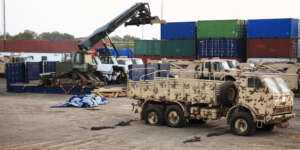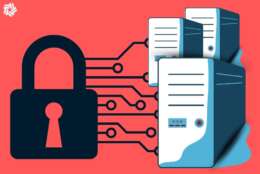Hubbard Radio Washington DC, LLC. All rights reserved. This website is not intended for users located within the European Economic Area.
On Air: Federal News Network
When a part is needed for a plane in the Air Force, it usually comes through the 448th Supply Chain Wing in the Air Force Sustainment Center. Ensuring that all those parts get to their destinations, and that they are not tampered with or sabotaged, calls for a good deal of risk management.
Read more“The key theme, and really everything that’s coming out of the executive order is about resiliency,” said Christine Barnhart, senior director at Infor for supply chain strategy. “The order is about how we make our supply chains less fragile and more resilient. It’s not so much about isolating us from the rest of the world, but really taking out some of the risks, and making sure that we’re able to be self-sustaining at least for a period of time.”
The past 18 months have thrown a wrench in many of the military’s plans, but the supply chain is one that has taken a particularly hard hit. Army Materiel Command had a handful of backups that caused issues for the supply chain during the height of the coronavirus pandemic.
The Defense Logistics Agency is in charge of moving $40 billion worth of goods around the world per year, but when COVID hit and supply chains started moving in fits and starts, the organization had to start changing to get goods delivered on time. Rear Adm. Doug Norton, director of logistics operations for DLA, said DLA worked closely with the Federal Emergency Management Agency to find ways to deliver quickly in emergency situations.
-
Crowdstrike has a lot to teach about routine system maintenance
The recent Crowdstrike outage has shown everything that can go wrong when doing a simple update.
-
OMB’s new FedRAMP policy takes aim at the pain points
Drew Mykelgard, the deputy federal chief information officer at OMB, said the updated FedRAMP policy pushes for more automation, reciprocity.
-
Newest constellation of weather satellites gets flight plan
Space Hour host Eric White spoke to Dylan Powell, Lead Strategist for Weather and Earth Science at Lockheed Martin.
-
Federal security agency struggling with new IT system for tracking contract guards
The IT challenges come as multiple agencies have been forced to close their offices for hours or even a full day due to a shortage of federal security guards.
-
IRS embarks on ‘absolutely critical’ refresh of legacy HR systems
The IRS is managing hundreds of legacy HR IT systems with thousands of workflows, but deferred upgrading these systems when the agency faced budget cuts.
-
Amid political leadership vacancies, calls for SES reform continue to rise
Opting for career SES officials or appointees who don’t need Senate confirmation may be the most effective way to minimize persistent leadership vacancies.
-
CISA executive director to depart after three years
Brandon Wales is the second senior leader to depart CISA in recent months. He led many of CISA’s internal and external initiatives over the last three years.
-
A new NASA experiment shows finding the building blocks for life on other planets may not require much digging
New research from NASA shows that the building blocks of life beyond Earth may not be hard to find were we ever to send a probe to do some digging around.













